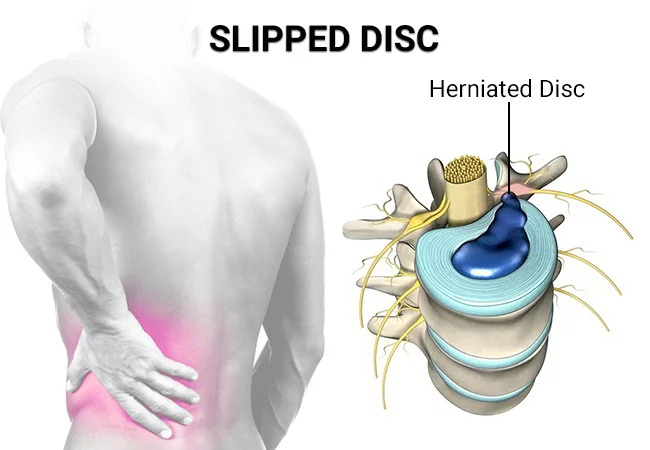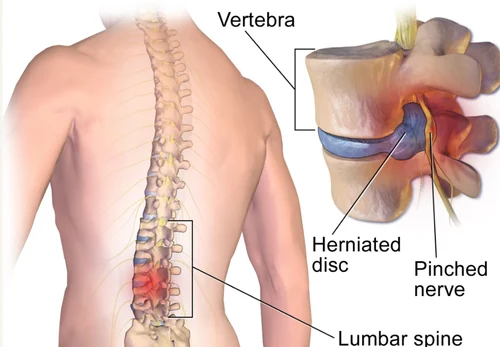
In a nutshell, the tissue that cushions the spine’s vertebrae functions as a shock absorber. The annulus, the disc’s outermost layer, is composed of hard tissue. The nucleus, a softer internal tissue, is shielded from harm by the annulus. The nucleus can be forced out and into the spinal canal by a rupture or tear in the annulus. Know more about slip disc.
Another popular name for a herniated disc is a bulging or slipping disc. The spinal nerve (spinal cord) is contained within the spinal canal, which passes through each vertebra as it travels down the back. Pressure is applied to the spinal nerve because the nucleus that enters the spinal canal through the annulus rupture or tear occupies a crowded area and is probably also displaced by the disc. There will be some discomfort as a result. The back is impacted by a disorder called a herniated disc. It may send tingling, pain, or numbness down one or both legs.
How Can Herniated Disc Problems Be Prevented?
Disease and trauma are two common causes of herniated discs. However, age is also a significant factor. Ageing weakens the discs and supporting spine components, making the discs more vulnerable to rupturing or ripping while lifting objects or even performing modest twisting movements.

How to avoid problems with herniated discs
Making lifestyle adjustments is part of learning how to avoid slipped disc issues. Numerous preventive strategies concentrate on the neck and lower back as these regions account for most ruptured discs.
Here are a few simple or fundamental suggestions for lowering the hazards.
- Straighten your posture
Whether you’re sitting, standing, walking, or jogging, it’s always crucial to keep your spine in alignment. Certain discs in the spine, particularly those in the neck and lower back are compressed by persistently bad posture. Maintain a straight spine, shoulders back, and head up.
- Engage in regular exercise
Exercises for strengthening the tendons, ligaments, core muscles, and back and leg muscles should be a regular part of any fitness regimen. Incorporate aerobic exercise as well, as this strengthens the cardiovascular system, which in turn maintains the health of the tissues. Exercises for flexibility aid in maintaining supple and stretched back ligaments and muscles.
- Acquire the proper lifting techniques
People attempt to carry large objects by bending at the waist far too frequently. This indicates that instead of using the strong leg muscles for lifting, the back is being employed. Worse, they twist at the waist when they pick up a big weight. Lift by bending your knees, then straighten your back to stand up. This lifts by using the force from the legs.






